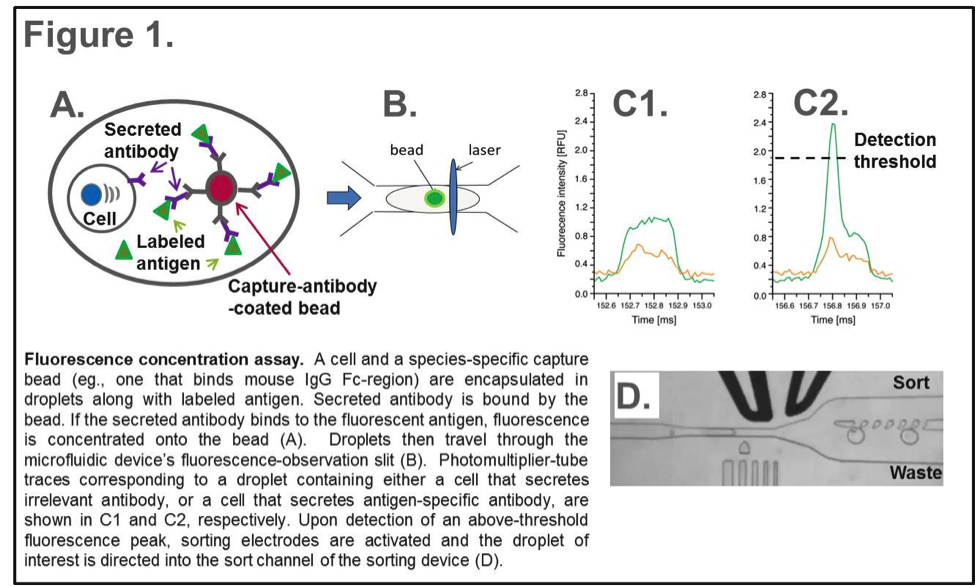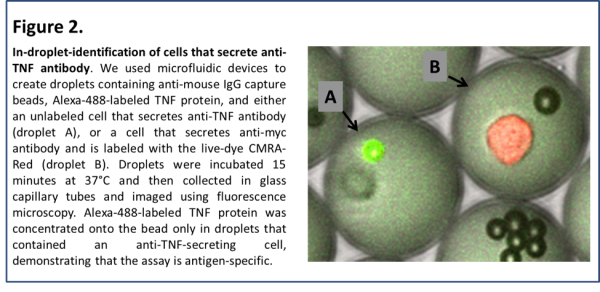The Weitz lab has developed microfluidic methods for the rapid generation, observation, and sorting of water-in-oil droplets. Mammalian cells remain healthy for several hours within these drops, and the small droplet volume (45 pL) ensures that cell-secreted molecules rapidly reach measurable concentrations. We’ve taken advantage of these features to develop a fluorescence –concentration assay for the identification and selection of individual cells that secrete target-specific antibody (Figure 1). Crucially, because this assay enables the analysis and selection of individual cells, there is no need to immortalize cells prior to screening. This allows access to cell types that are difficult or impossible to immortalize, such as plasma cells, rabbit cells, and human cells. Access to these cell types will greatly speed the identification of useful antibodies. Further, an ability to study human antibody-secreting cells might enable identification of valuable human antigenic epitopes, such as those related to cancer or auto-immune conditions.

Figure 1. Schematic of droplet-based fluorescence-concentration assay to select cells that secrete antigen-specific antibody.
In Figure 1, we schematically depict the fluorescence-concentration assay. In Figure 2, we demonstrate that the assay can distinguish droplets that contain cells that secrete antigen-specific antibody from droplets that contain cells that secrete irrelevant antibody.

Figure 2. In-droplet identification of cells that secrete antigen-specific antibody.
Members of the Weitz lab who helped with this work include Linas Mazutis, Liheng Cai, Lloyd Ung and Don Aubrecht. Some initial work was performed in collaboration with the lab of Dr. Andrew Griffiths (ESPCI Paris Tech, Paris, France). The antigen-specific fluorescence concentration experiments were performed in collaboration with the company UCB Pharma (Brussels, Belgium and Slough, UK).
